Geography
What are volcanoes?
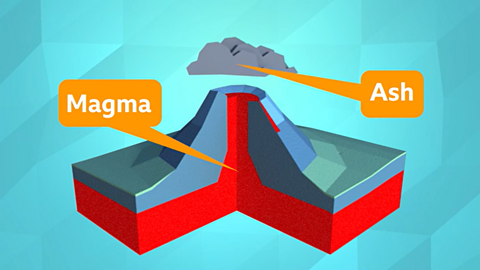
Volcanoes can look like small mountains or hills.
A volcano is an opening in the Earth’s crust that allows magma, hot ash and gases to escape.
Magma is molten rock - rock that is so hot it has turned into liquid.
When magma reaches the surface of the Earth, it is called lava. Lava comes out of the volcano as a volcanic eruption, along with gases and ash.

I’m in Italy visiting a very famous volcano called Mount Vesuvius.
A volcano is an opening in the Earth’s crust, which allows hot magma, ash and gases to escape from below the surface.
I’ve been asked by my fellow explorers to get some rock samples from Mount Vesuvius, but it’s an active volcano, so I’ll need to watch out for things like lava flow.
Lava is very hot molten or liquid rock, which reaches over 1,000 degrees. So I’ll need to stay at a safe distance!
Volcanic ash. Clouds of ash can rise miles into the sky and block out light from the Sun, changing temperatures across the land and damaging aeroplanes in flight.
Pyroclastic flow. Hot gas, ash and rock mixed together to make a deadly cloud that flows down the side of the volcano.
It’s not all bad. They can also be tourist attractions!
The lava and ash from an eruption breaks down to provide valuable nutrients for the soil and is great for growing crops!
So, even though volcanoes can be very dangerous they play an important part in the lives of those living nearby!
Ok, I’ve got my heat resistant suit, so I am ready to go!
Err… I think?
What are the different types of volcano?
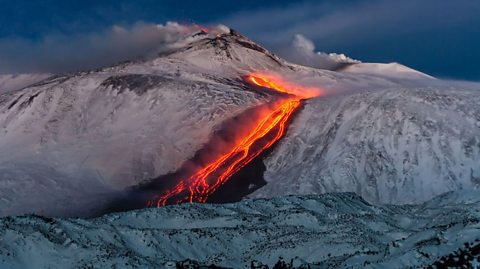
There are two main types of volcano:
composite volcanoes are the most common type of volcano. They can have violent eruptions and can grow bigger as layers of thick lava and ash harden on top of each other. Mount Etna in Sicily, Italy, is an example of a composite volcano.
shield volcanoes do not have such violent eruptions. These volcanoes tend to have gentle slopes and their runnier lava spreads and hardens over a wider area. Mauna Loa in Hawaii is an example of a shield volcano.

How do volcanic eruptions happen?
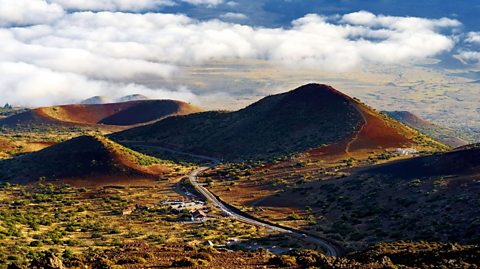
Most volcanic eruptions are caused by pieces of the Earth's crust, called tectonic plates, moving towards each other.
Some volcanoes, like Mauna Loa in Hawaii are caused by hot spots in the Earth’s crust. These do not erupt violently and lava usually flows slowly out of them.
Eruptions from volcanoes can be very dangerous. They can produce:
pyroclastic flows - fast moving clouds of hot ash, gas and rock
ash clouds - small pieces of rock and glass that can be carried in the air for many kilometres
volcanic bombs - large bits of very hot rock blown out of a volcano

Can I have a career in volcanoes?
Did you know that you can get paid to research volcanoes?
Chris has built an exciting career as a volcano vlogger and guide for a company called Going to Extremes. He uses photography and film to record and write about his experiences exploring and climbing inside volcanoes for his blog.
He is currently working with drones to map lava lakes. They measure the height and depth of the lakes, and help to identify any potential signs of new eruptions.
Chris loves sharing his passion for volcanoes with others, helping them witness science in action first-hand, including helping to guide film crews on how to safely access these dangerous environments.
Watch his amazing work in the video below!
I’m Chris, I’m 25 and I’m a volcano guide.
Anywhere there is a volcano with a massive lava lake I climb inside there and take film crews into some of the most difficult places on this planet. The volcanoes we operate on, have got huge lava lakes and these pump out huge volumes of SO2 so that's sulphur dioxide and the extremely corrosive environment that we face up there destroys our equipment in a matter of days.
It's amazing to stand next to a lava lake and then look around you and see all the different layers of volcanic activity.
I mean what I’m seeing in front of me is a boiling pot of molten magma and around me is its solid form. It's constantly changing and it's a really amazing place to study.
At school I had a real interest in Science, Geography and also Maths. I apply the skills and knowledge that I learnt in school into the world of volcanoes.
Currently I’m using drones to map these volcanoes we can analyse the depth of the lava lake, its height and proximity to the top of the crater, and also measure if there's been any significant collapses that could signify a new eruption. I started travelling and I went to more and more extreme places picking up a camera along the way, I started with photography until that led me to a volcano in the South Pacific.
I’m so grateful to share that experience with other people and hopefully push people more into this crazy world of volcanology.
Activity: Make your own erupting volcano!
Have a go at making your own volcano.
Nina from Nina and the Neurons teaches you how to build a volcano using household items.
Quiz: Volcanoes
Learn more about volcanoes
Volcanic mountains
2nd Level: People, places and environment
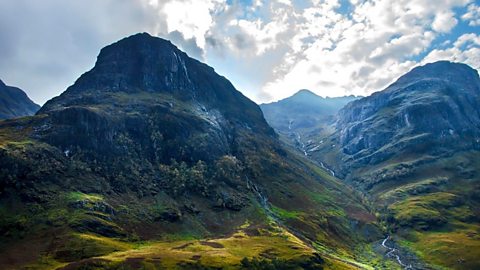
Volcanoes
KS2 History: Geography
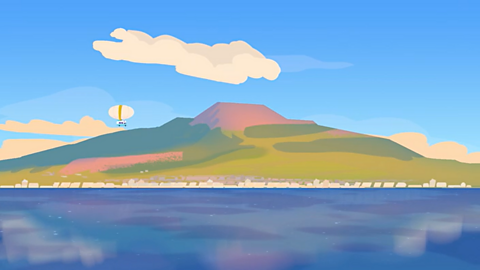
Earthquakes
What are earthquakes?
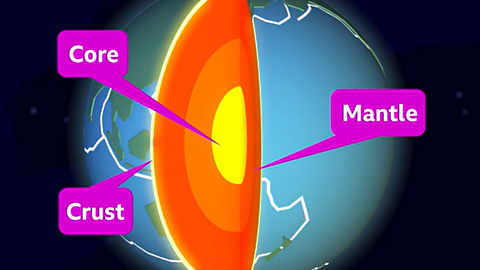
The Earth is made up of different layers:
the core at the centre, which is mainly metal
the mantle, which is mainly rock
the crust, which is the part we can see
The crust (together with the upper layer of the mantle) is made up of different pieces, called tectonic plates. These plates fit together like a jigsaw and are moving at a rate of a few centimetres a year, in different directions and at different speeds.
Some plates slide past each other, others move away from each other and some bump into each other.
Sometimes these plates lock together when they meet. This is called a plate boundary or a fault line.

Watch: How do earthquakes happen?
Jelly is my favourite pudding. This one is particularly wobbly for some reason. Oh… it’s an EARTHQUAKE!
This one is quite weak, and earthquakes here in Japan are actually quite common so there’s no need to panic.
To understand earthquakes we need to look at the structure of the Earth.
The Earth is made up of different layers.
At the centre is the core, around that is the mantle, and on the outside is the crust.
The Earth’s crust is cracked into different pieces called plates, a bit like an eggshell.
These plates are very slowly moving and shifting around and where two plates move towards each other, you find the most powerful earthquakes.
Friction causes pressure to build up until it becomes so great that it is suddenly released as a shock wave. This is the earthquake.
Most earthquakes are so small they can only be detected by special equipment.
But some can be so powerful they can destroy whole towns and cities in minutes.
Sometimes, if an earthquake occurs under the ocean, it creates a huge wave called a tsunami.
Although earthquakes in the UK are very weak and rare, for many countries like Japan, they are relatively common.
People living in those countries will take extra precautions, like building earthquake-resistant buildings that sway with the shock wave, or by providing earthquake shelters.
They even practise what to do if an earthquake strikes, like taking cover under a sturdy piece of furniture to protect themselves from falling debris.
Earthquakes are a fact of life in this part of the world, so as soon as an earthquake ends, it’s business as usual. Err… more jelly please! …Oh
Asks for more jelly in Japanese
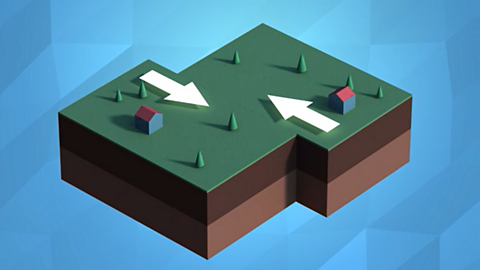
As plates move in different directions over long periods of time, friction causes energy to build up.
It becomes so great that the energy is released, which creates a shock wave - an earthquake.
If an earthquake is beneath the ocean it can create a series of huge waves, called a tsunami.
There are thousands of earthquakes across the world each day. Some are quite minor and can only be detected by specialist equipment. But some earthquakes can destroy cities in minutes. The size of an earthquake is measured using the Richter scale.
In some countries like Japan where earthquakes are relatively common, they build earthquake-resistant buildings that sway with the shock waves rather than fall down.

Quiz: Earthquakes
Bitesize Primary games. gameBitesize Primary games
Play fun and educational primary games in science, maths, English, history, geography, art, computing and modern languages.


